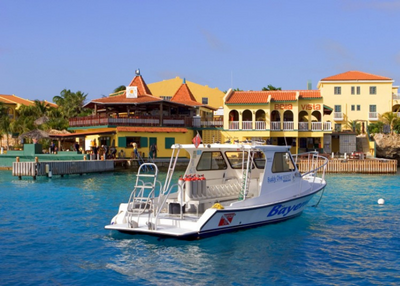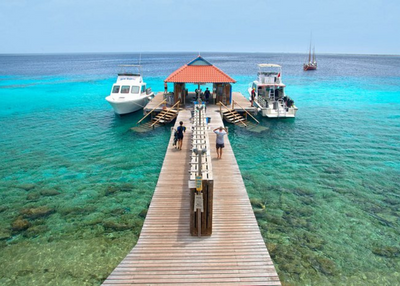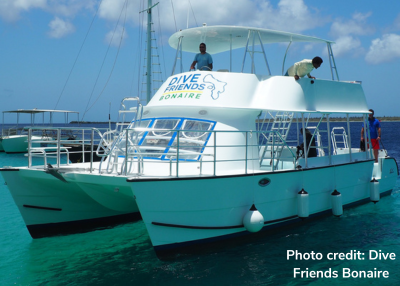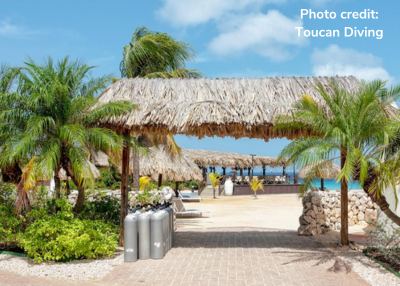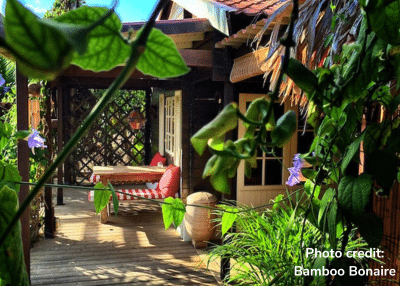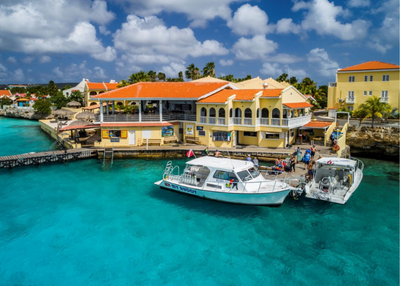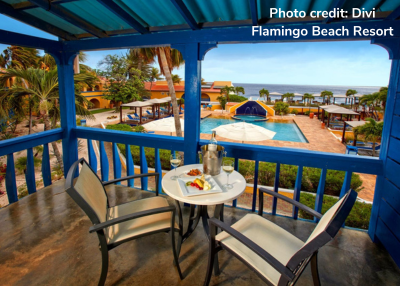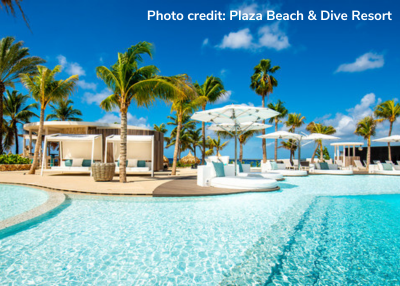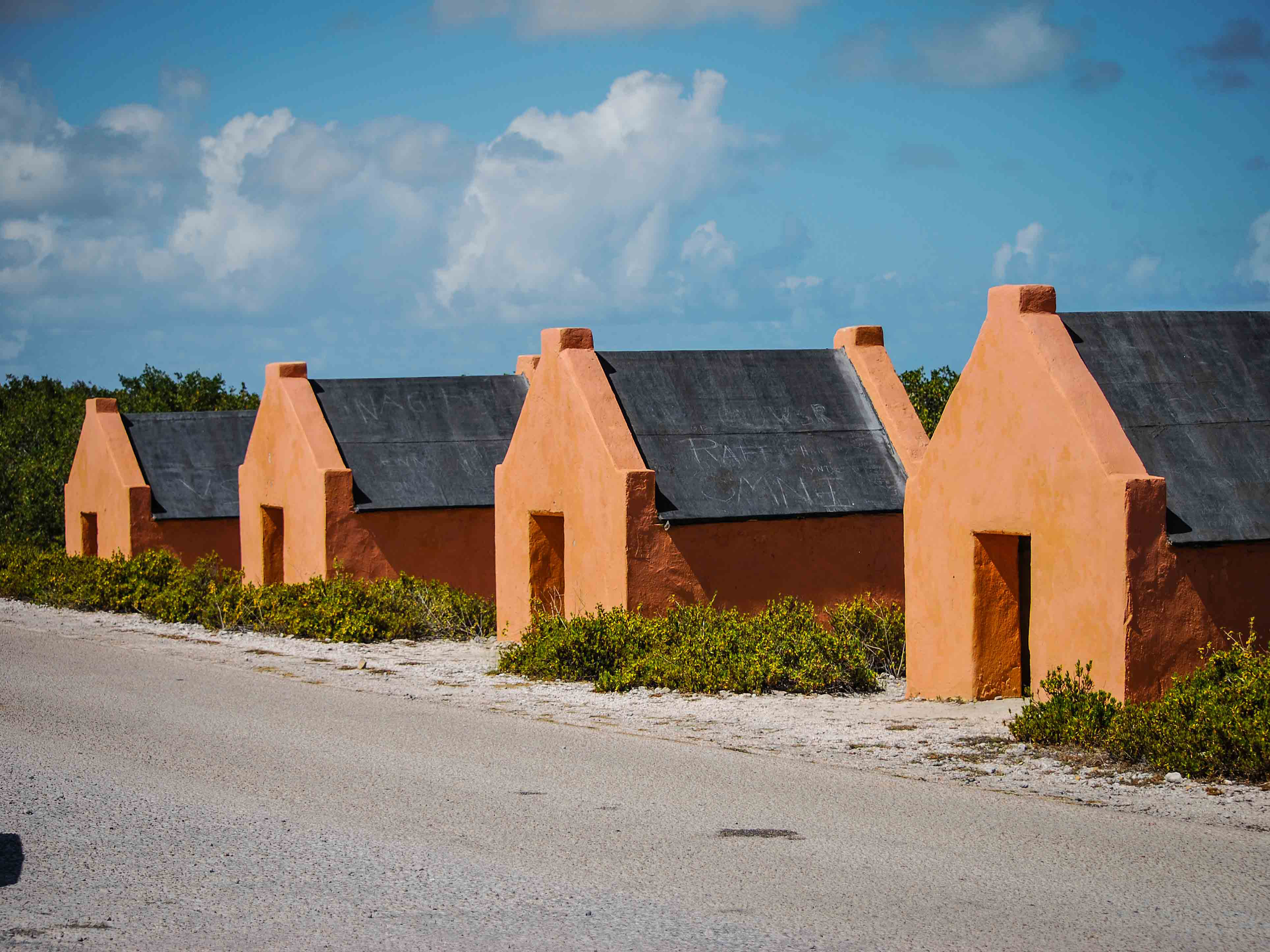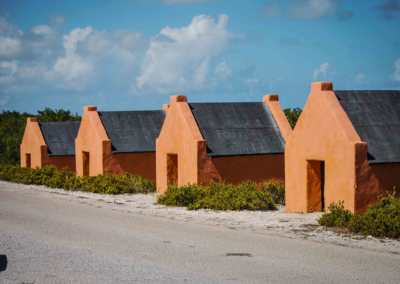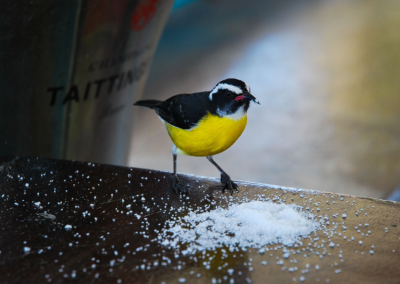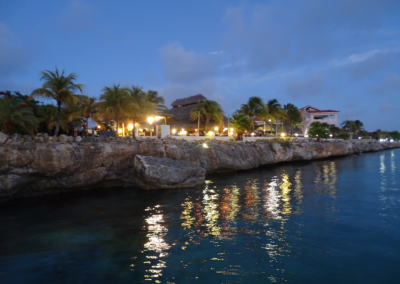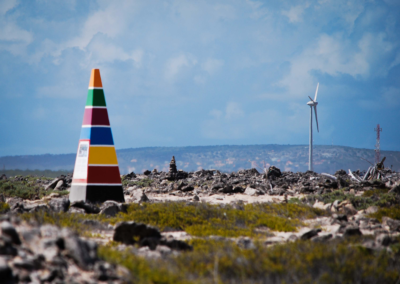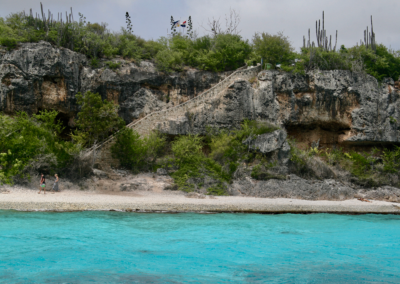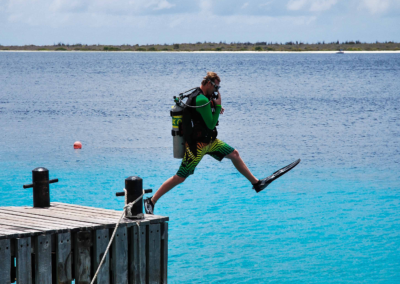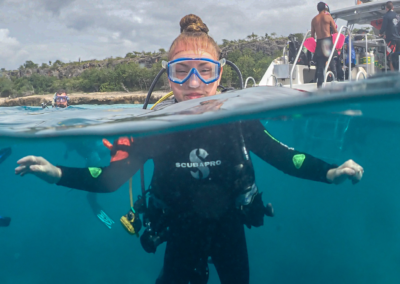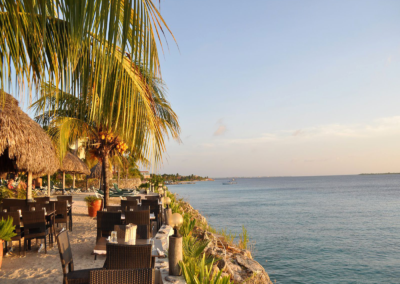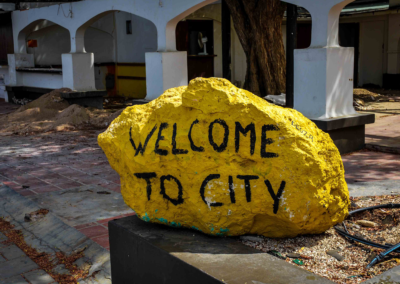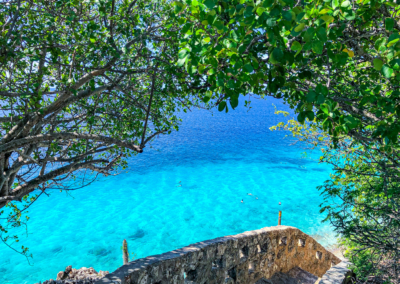Scuba Diving Trips in Bonaire
Upcoming Trips
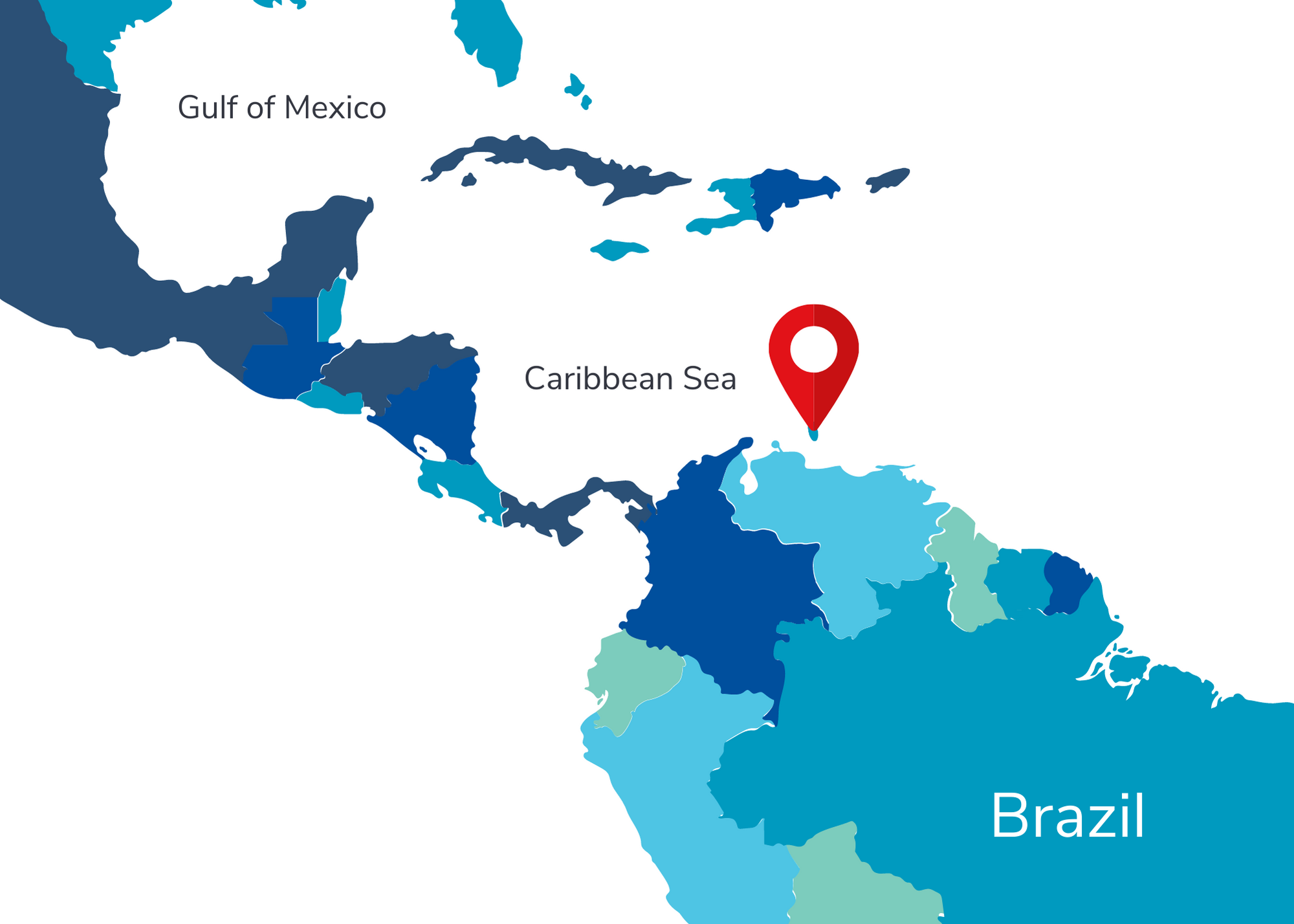
Welcome to your underwater paradise. With abundant marine life, over 80 official dive sites, and breathtaking views, you’ll never want to leave. Bonaire is often referred to as the shore diving capital of the world. Its crystal-clear waters are perfect for any diver at any level.
Bonaire is an island municipality of the Netherlands and lies off the coast of Venezuela in the southern Caribbean. It is a part of the ABC Islands, Aruba, Bonaire and Curaçao, and one of the three westernmost islands of the Leeward Antilles.
The southern part of the island is mostly flat while the northern side is hilly with it’s peak reaching 787 feet high. Around 70% of the island’s surface is coral limestone. The capital, Kralendijk, which translates to “coral reef” is a small town that boasts well-preserved Caribbean architecture.
What To Expect
Scuba Diving
The calm waters allow novice divers to swim parallel to the shore with minimal currents. Advanced divers will enjoy unlimited shore dives and freedom to explore the ocean floor.
Each dive site in Bonaire is marked with a large yellow rock with the site name painted on it. This makes it easy for you to hop in the car and drive to your next site easily. You’re on island time now and the sea is yours.
Keep your eyes out for:
- Parrotfish
- Angelfish
- Moray eels
- Barracudas
- Turtles
- Nurse sharks
Recommended Specialty Courses
- Stress & rescue
- Photo & video
- Coral identification
- Perfect buoyancy
- Navigation
- Nitrox
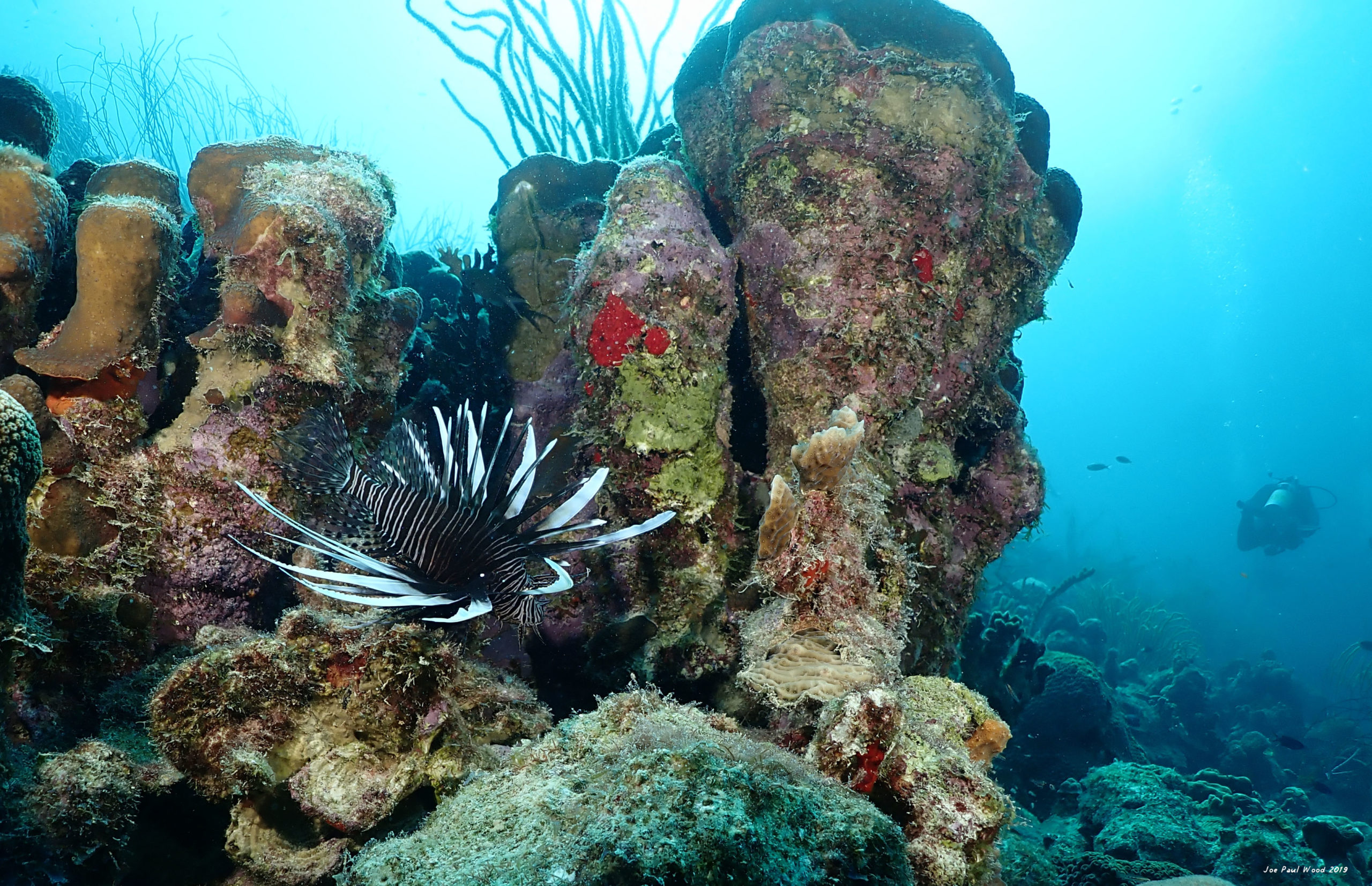

Conservation Efforts
Bonaire is also known around the world for its conservation efforts. In 2012, the Bonaire Island Council permitted the Reef Renewal Foundation Bonaire to start developing coral nurseries and restoration projects on the island. There are multiple programs on the island where divers can learn first-hand what it takes to care for these nurseries.
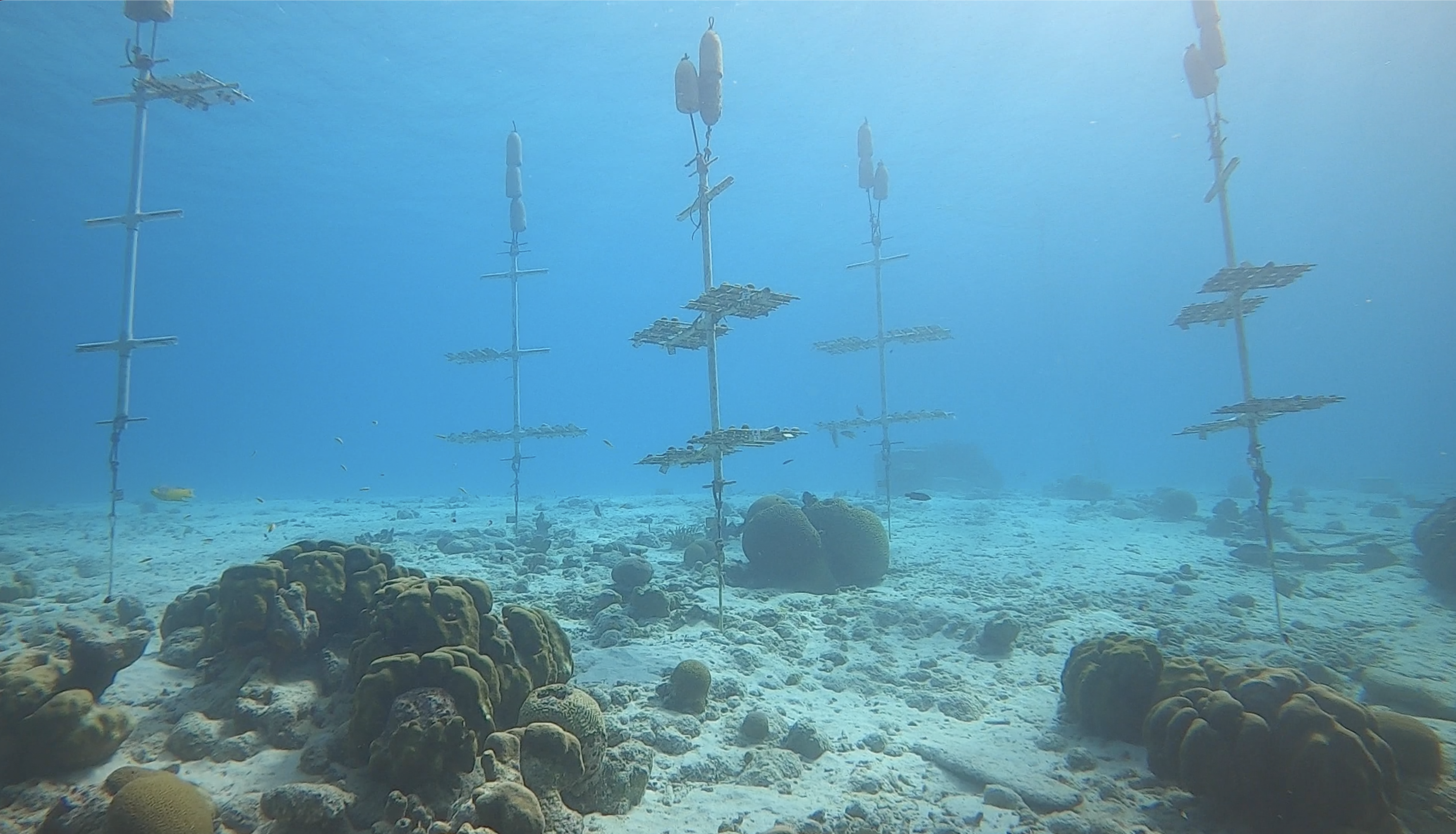
Dive Friends Bonaire
Dive Friends Bonaire practices a variety of conservation efforts. They are a PADI 100% AWARE partner, host quarterly clean up dives, have a program for collecting marine debris, practice lionfish removal dives, participate in REEF surveying, have a shark monitoring citizen science program and MORE! Read about their conservation efforts in depth here.
Buddy Dive Resort
Buddy Dive Resort is the founding partner of Reef Renewal Foundation Bonaire. The goal of the Reef Renewal Foundation is to assist the local government and local environmentalists to preserve the existing genetic diversity of staghorn and elkhorn corals, establish a nursery and restoration program designed to restore the shallow reefs, and to work with the community to identify and reduce land-based stressors, such as uncontrolled storm water runoff and poor sewage treatment practices. With the Reef Renewal Foundation, divers can join the weekly presentation at Buddy Dive Resort and participate in one of the Reef Renewal activities. You will learn all the techniques to restore coral, how to work in a nursery, fragmenting corals and out-planting them to the restoration sites.
Captain Don’s Habitat
Captain Don’s Habitat was created by none other than Captain Don himself. His passion for marine conservation led to the creation of the permanent mooring system and eventually to the Bonaire National Marine Park.
Captain Don’s Habitat was the first resort on the island to install a state of the art wastewater treatment system designed by marine biologists of Harbor Branch Oceanographic Institute, where the treated water is tested on a quarterly basis and shows a major removal of harmful nutrients that might otherwise end up on the reefs causing damage to our corals. The treated water is then utilized to irrigate our lush gardens that not only provide a wonderful aesthetic atmosphere to the resort but the lush vegetation also help to protect the fragile reefs by up-taking and utilizing nutrients that could be harmful to the corals. No fertilizers of any kind are used in the maintenance of the gardens. Read more about Captain Don’s conservation efforts here.
Culture
Bonairean culture is based on strong family ties and respect for nature. Their population is a mixture of African, Caribbean and Dutch influences. Dutch is the official language of Bonaire and Papiamento, a mixture of Portuguese, African, Spanish, Dutch and English is also commonly used.
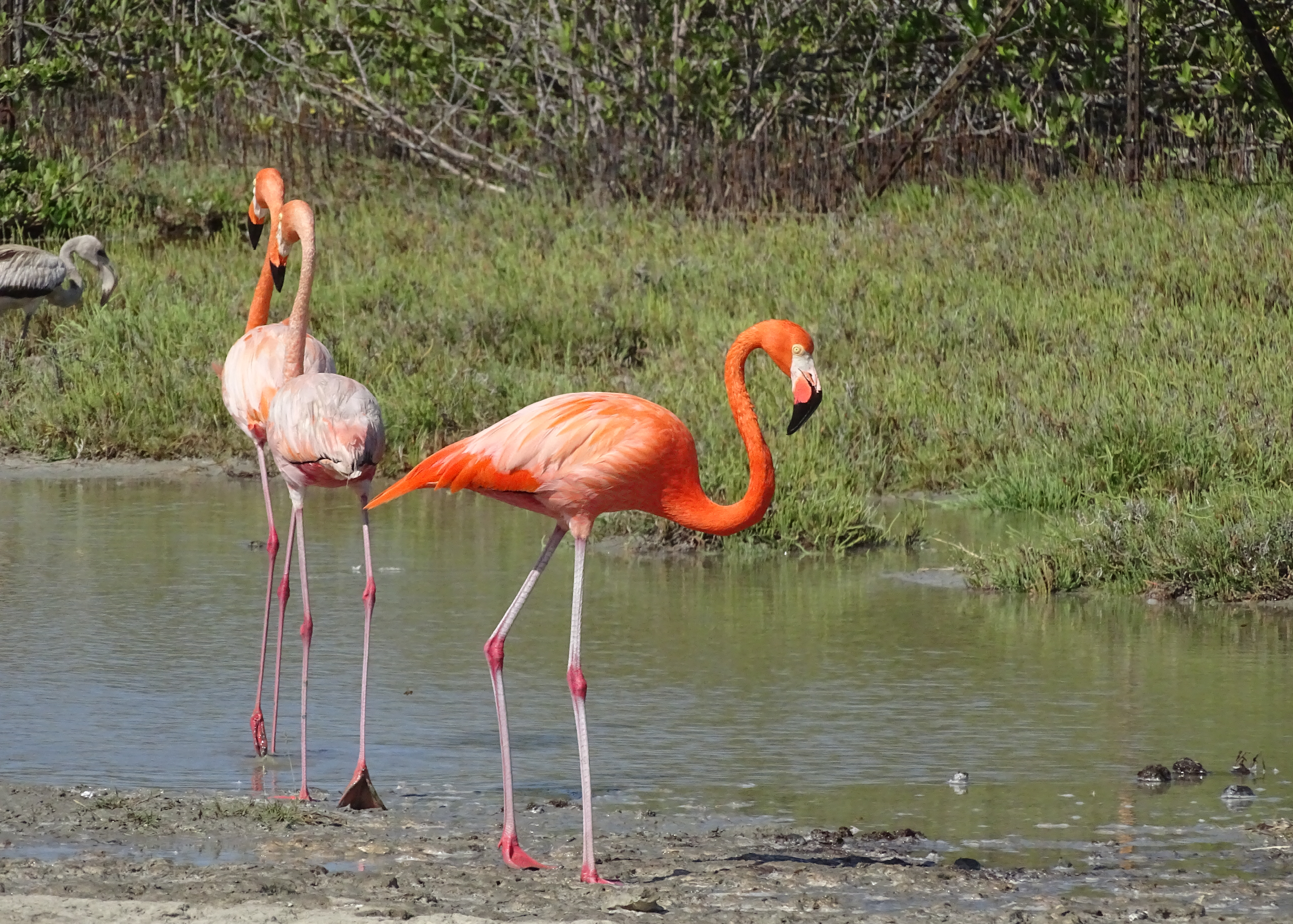
Bonaire National Marine Park
The Bonaire National Marine Park encompasses all the waters surrounding the island and the uninhabited islet Klein Bonaire. The 6,700-acre preservation area is teeming with untouched coral and mangrove forests.
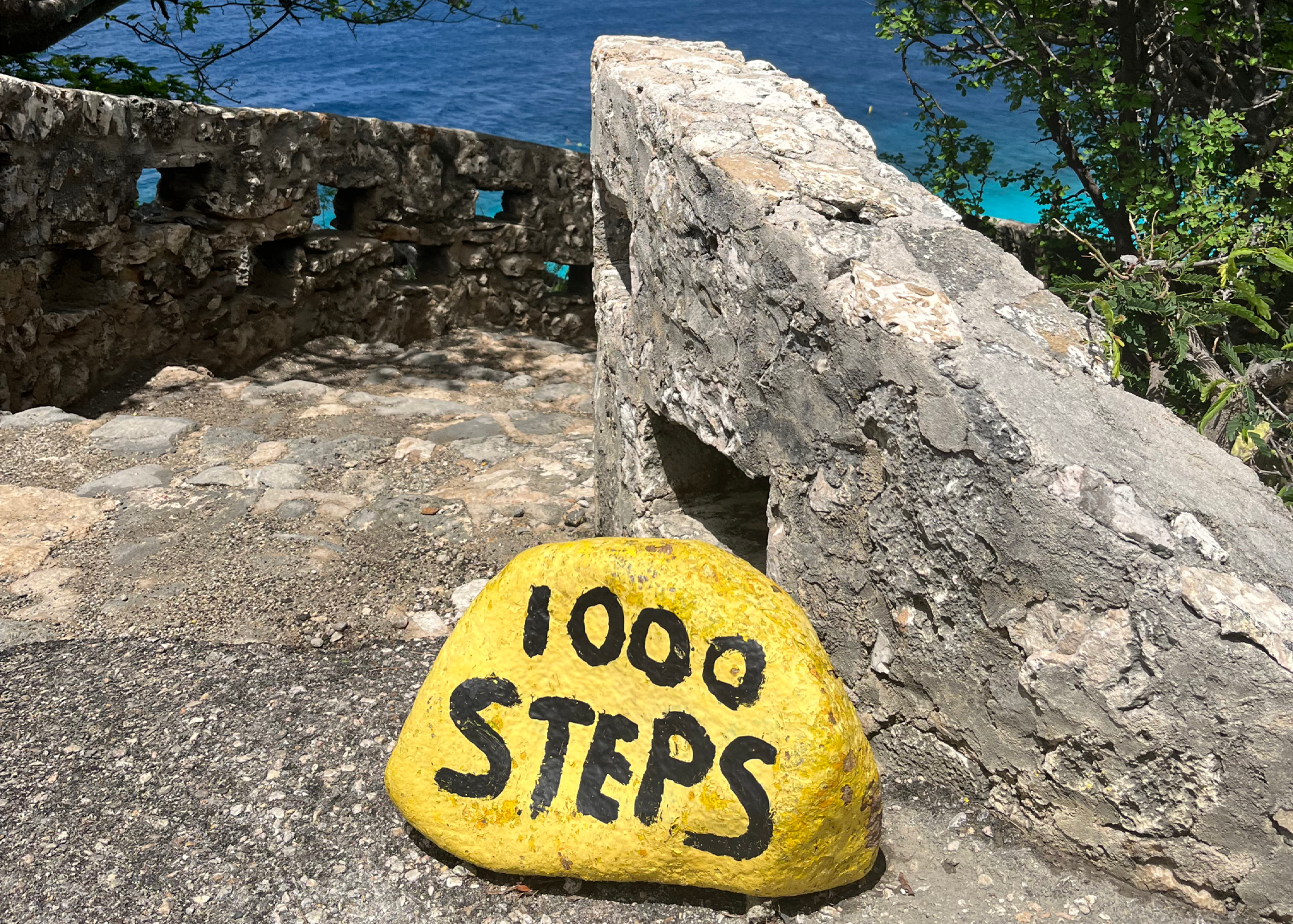
Shore Diving
It’s a no-brainer to take advantage of the shore diving Bonaire has to offer. As the “Shore Diving Capital of the World”, divers can hop in their rented vehicle and explore the island looking for the best dive spots. Each site is marked with a big yellow rock and there are over 80 sites to choose from.
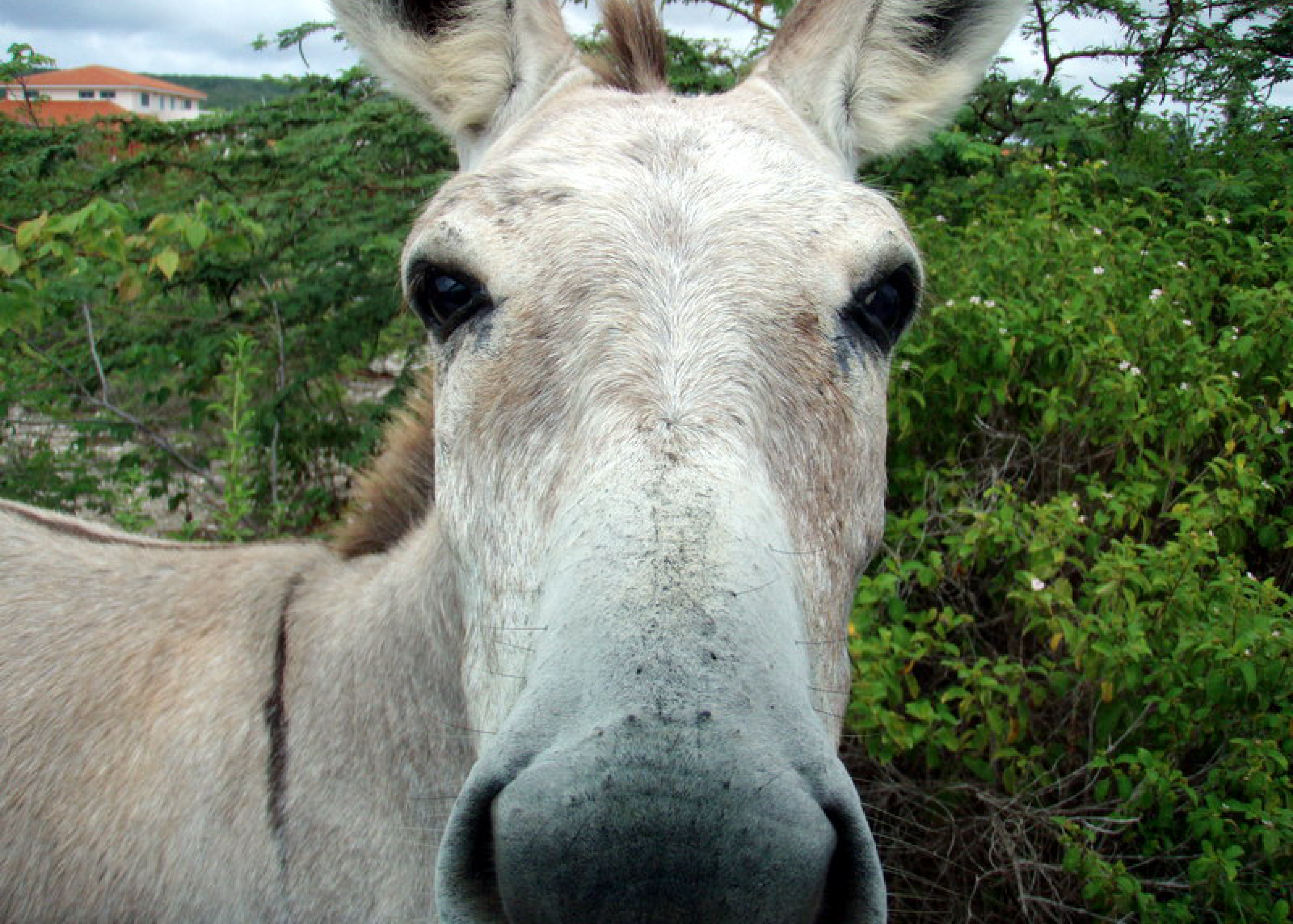
Donkey Sanctuary Bonaire
It’s not every day you get to visit a donkey sanctuary! This sanctuary is committed to providing a protected life for all donkeys in Bonaire, and they currently house over 700 donkeys. You can visit by car or walk on foot to pet and feed the donkeys.
What prior travelers say
-Matt C.
Traveler Photos
Know Before You Go
Dive Insurance
Dive insurance is required on all Diventures trips. We recommend purchasing DAN dive insurance.
Travel Insurance
Travel insurance is not required but is highly recommended for all Diventures trips. We recommend purchasing DAN trip insurance.
Currency
The official currency of Bonaire is the U.S Dollar. ATMs are spread throughout the island and major credit cards are accepted at most major tourist establishments.
Language
Dutch is the official language of Bonaire. Papiamento, a mixture of Portuguese, African, Spanish, Dutch and English is also commonly used.
Electricity
Bonaire operates at 127 Volts AC at 50 Cycles (or Hertz or Hz). We advise bringing a transformer with you.
Water
It is perfectly safe to drink tap water in Bonaire, which is distilled from seawater.
Passport
Passport must be valid at least 6 months beyond the dates of your trip.
Need help packing?
We can’t pack for you, but we can share our packing list and travel tips.


